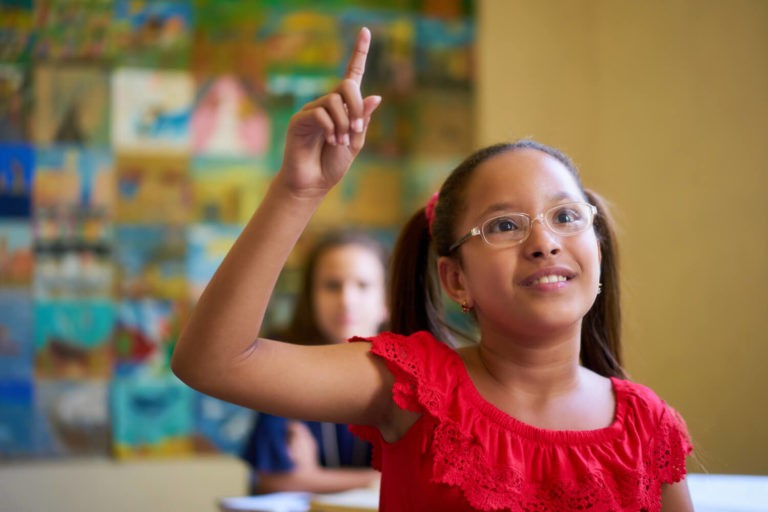So many rules and regulations exist with special education that it can be overwhelming for veterans and new teachers alike. Trying to maneuver through accommodations and modifications and doing all that is federally required is a major challenge for educators. Add into another element that often gets pushed to the side: gifted education.
This area, which exists as a special education component, is less regulated than that of the Chapter 14 content. Most times, if schools are following the guidelines, there is usually no monitoring that occurs, though this is beginning to change in some states.
The trouble is that without monitoring and a stronger focus on professional development or some form of staff support, most teachers may not know what to do with their gifted students. Usually, because they have such high abilities, gifted students are asked to teach themselves and then left alone to transition through the content.
While this doesn’t happen in every school, educators often struggle with the levels of differentiation for their gifted students. So what can be done to adjust instruction to meet the needs of those valuable students?
Complex Needs of Gifted Students
The majority of teachers will take the time to get to know their students, which allows them to plan appropriate activities. This is the same process that must be followed with gifted students with their cognitive abilities. They often do not think like other students, which requires an adaptation in the types of assessments and instruction. And the misnomer that gifted students can do everything well is a fault in education.
To adjust for gifted learners, teachers must purge themselves from the traditional ways of presenting instruction. These students possess high levels of curiosity and, when engaged, will ravenously scoop up information. Educators must use this to their advantage. Combining the students’ thinking processes and minimal amount so information will allow the students to fill in all of the missing information and often gain more from their own research than a basic PowerPoint with highlights.
Offering tiered learning is possibly one of the most effective ways to teach all levels of students, but especially the gifted learners. While it takes a little more planning at the beginning, preparing entry level and advanced learning combined with extension activities is a perfect way to tiered learning. This technique allows students to select the pathways that match them best and with which they may be the most comfortable.
Strategies and Examples
A strong strategy that will not require an immense amount of time for teachers is to have the student collaborate with the instructor to determine the unit plan: what activities will they be creating, what types of assessments and rubrics should the student prepare for, and what does the end result need to reflect? Having the gifted learner help with this process will take some pressure off the teacher, yet allow him or her to better understand the types of activities these individuals need. If students can show mastery quickly, what is the harm in allowing them to move beyond the traditional unit design?
One of the more popular strategies for gifted learners is to offer the most difficult problems first. If students can handle the five most difficult problems in the assignment, there is no need for them to complete the full 25, which provides more time for acceleration and other discovery of new material.
By doing this, the educator can compact the curriculum, add some higher-level concepts and problems, and allow gifted students the opportunities to work on extension activities. The most advantageous part? This can be done for all students by giving them a shot at accurately completing the most difficult problems in order to move into extension activities. Teachers may be surprised how many students might move out of their comfort zones. And this is a great way to get a formative assessment in place for the unit.
Allow gifted learners to collaborate with their peers. According to research from the National Association for Gifted Children (NAGC), by giving them an opportunity to work with others of a similar advanced capability, it will boost not only their learning but others in the classroom. NAGC discovered that gifted learners will challenge themselves in ways that are not expected.
Other avenues for challenging gifted types are to incorporate more complex reading materials, offering big picture concepts that allow them to analyze the smaller details, and providing portions of the assignment that do not have clear resolutions, which will require them to reconfigure they ways in which they think in order to solve them.
It Can Be Done
Schools must move away from the assembly line of teaching and learning. In order to meet the social and emotional needs of all students, and in this case, of the gifted learners, educators around the nation must begin to break down the outdated mode of teaching in the same format. If a student can show or has shown mastery, it is no longer about the grade they receive or the equality of everyone doing the same activity in the same way. Give those gifted students the grade for mastery (95% or above on an assignment, activity, project, evaluation), and let them explore the higher levels of content. Let acceleration and enrichment occur naturally; it won’t mandate an immense amount of extra time for teachers to prepare and will pay dividends for all students.




